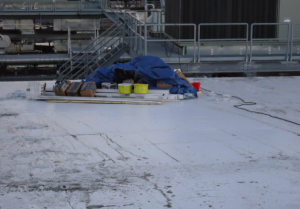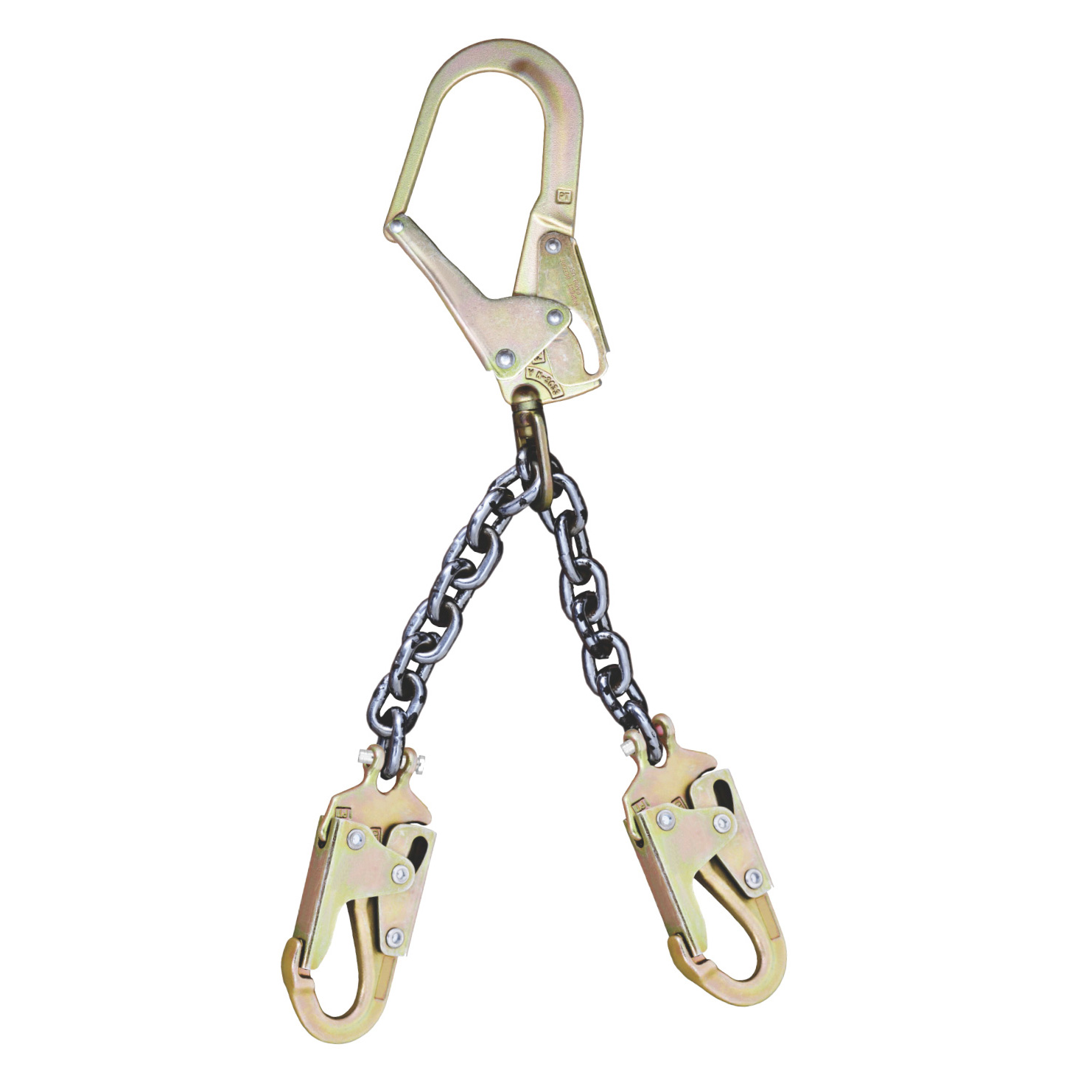Solvent-based adhesives provide the applicator a larger window for error when installing an adhered, single-ply roof assembly. The solvents will flash off more quickly than moisture-curing waterborne adhesives, and the applicator can safely apply the adhesive at lower temperatures. However, in very cold conditions, moisture can condense on this applied adhesive as the solvents flash off, potentially compromising the bond. Keeping the adhesive stored at recommended temperatures until it is needed for installation gives the applicator the best chance for successful installation.
In some cases, manufacturers restrict shipment of water-based adhesives in some geographic areas during winter months. If waterborne adhesives are installed below manufacturer recommendations or allowed to freeze, the required adhesion strength may not be possible. As such, use of waterborne adhesives should be avoided in winter months.
Hot-asphalt handling also should be given more care and attention as temperatures fall. The asphalt will require higher temperatures at the kettle and also the use of insulated pump lines, luggers and buckets to maintain the proper temperature at point of installation. Applicators also will have less time to apply the asphalt to the substrate and set the felt before the asphalt cools. It will become important to apply asphalt to smaller-sized areas and immediately roll the felts into the asphalt to minimize cooling time when compared to warm-weather applications. The higher temperatures also increase the potential for a “flash-point” fire at the kettle; extra safety precautions and close monitoring of the kettle temperature are necessities.
Installation Productivity
Mother Nature doesn’t only impact materials, she also impacts how people perform. Colder months will affect contractor productivity and potentially influence quality. Cold winter weather brings shorter workdays and fewer hours with the required temperatures to install materials. With limited daylight hours and temperatures, daily planning by the project manager becomes critical to ensure all aspects of the daily production area can be properly completed. Projects will likely take longer and result in extended project duration. The additional labor hours required to complete a project will likely increase project costs. Be sure to consider this as you determine when to start or rush to complete a project.
As contractors rush to start and complete projects during cold weather, the potential for mistakes and taking shortcuts increases. Building owners should consider incorporating a quality assurance process that includes a construction observer to ensure the project is installed as specified and conforms to construction documents. The observation process typically includes verifying material components; compliance with the specifications, plans and details; and, in some cases, safety audits.
It is important to understand when performing cold-weather work, that taking extra time may have to take precedence over the schedule. This can be difficult to manage given funding or occupancy deadlines; however, taking time to ensure the roof system is designed and installed correctly will reduce potential future headaches and result in a roof system that meets performance expectations.





I didn’t know that some of the materials used in residential roofing could be temperature dependent. However, it makes sense that adhesive effectiveness can be determined by the ambient temperature. I’m sure that curing times can also be longer if the weather is colder. I’ll have to keep that in mind if I ever need roofing done. Thanks for the information.